KEF’s Uni-Q driver puts a tweeter inside a midrange and bass cone. The result is, according to the manufacturer, a wider stage and better imaging. KEF has been using the technology for some time now in speakers of various size, but it’s in the small KEF LSX that we see what these drivers can really do. These small active speakers can be comfortably be positioned anywhere in your house, be it your desk or the living room, looking integrated in their surroundings.
The KEF LSX are more than speakers, they’re a complete system. I stress this out because calling them “speakers” would be a bit reductive: the amount of connection options and the flexibility afforded by the technical and technological choices KEF made are terrific. It’s a complete system that only needs a source of music, which is staggering considering the small footprint it has. That KEF was able to downsize the LS50 Wireless and create something even more compact while preserving the overall sound quality is simply amazing.
Disclaimer: I got this unit on loan from Kef. Special thanks to Jasmine! Additional information can be found on Kef’s website. The KEF LSX retail for £999/$999.
TL;DR: recap
| Pros |
Cons |
| Desk-like small size
Lots of connections: Bluetooth, WiFi, Ethernet, optical, 3.5 mm jack… Well-made app to set up the speakers Almost neutral tuning with a touch more bass Great technical ability |
Some people may not like the slightly warm tuning |
Rating: 10/10
Accessories & Packaging
The package I received appears to be the same that has been touring UK (and possibly even beyond) and so these same speakers have possibly been reviewed a few times before. The package is therefore not really in a good shape.
Design, Build & Materials
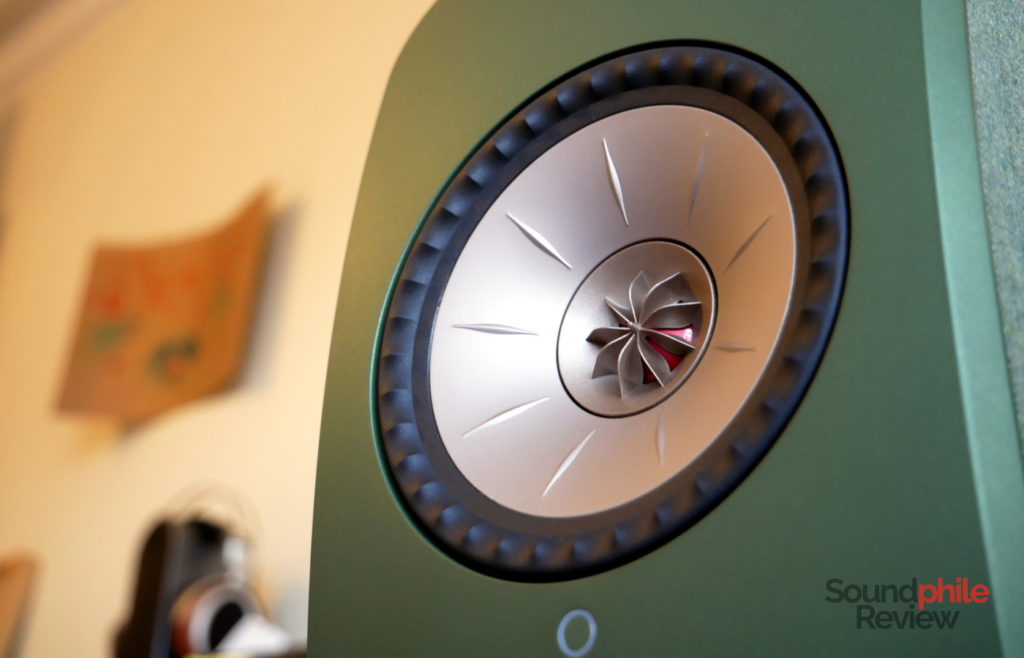
As far as speakers go, the KEF LSX are small. They are not IK Multimedia iLoud Micro Monitor small, but they’re still usable on a desk. If you want some cold numbers, they’re 240 x 155 x 180 mm. Yes, they’re small. The cabinets are made of plastic, in the case of this unit coloured in green, with the two lateral surfaces and the top wrapped in some fabric. The rough finish of the fabric actually lend the LSX a great look, as the small imperfections somehow make them more real. They look like something that can actually be used – and by that I mean that I often feel like too-perfect stuff always instils in me the fear of breaking or damaging it. It may be my very own way of experiencing reality, but anyway – the LSX look gorgeous and the finish only makes them look perfectly fine in whatever room I placed them in. From my desk (in pictures) to the living room, they looked like they belonged there.
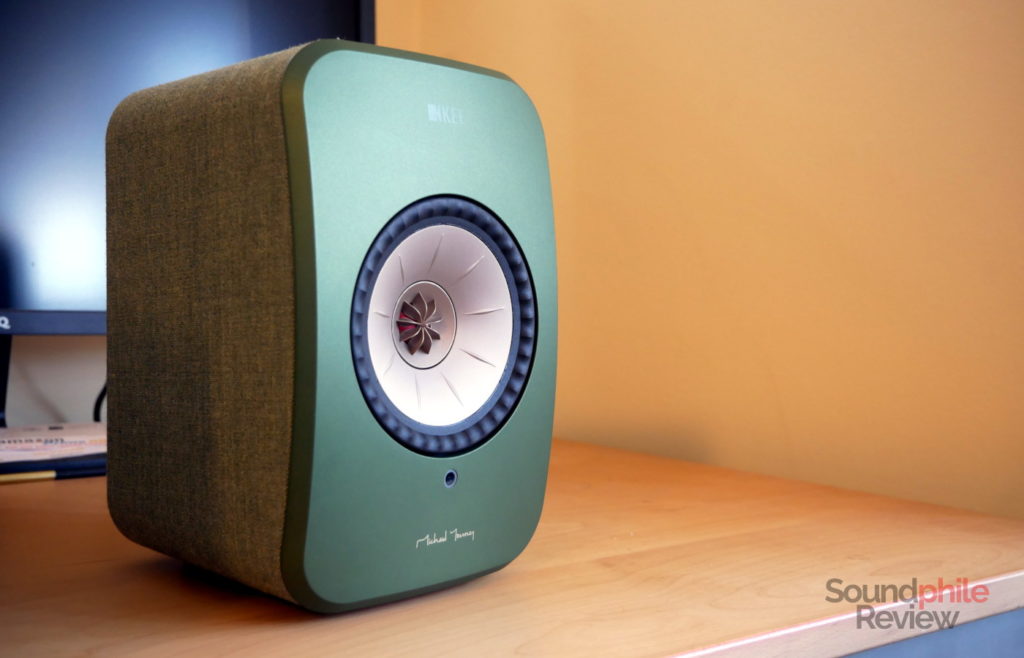
The front only shows the Uni-Q driver, save for the status LED. It’s a simple and understated but elegant design. The woofer has a copper colour with a black surround and a red centre where the tweeter is, though other colour variations have differing colours for the driver too. KEF recently announced the new LSX Soundwave by Sir Terence Conran which offers a different take on the design, with a beige colour for the cabinet and driver and a striking blue tweeter. The back, on the other hand, has all kinds of connectors on the master speaker: power, optical, 3.5 mm jack, subwoofer out, Ethernet (both to connect the speaker to the network and to the slave speaker) and even a USB port to charge smartphones and other devices. The slave speaker is simpler and only has the power and Ethernet connectors. There’s also a button to pair the two speakers, plus a Bluetooth pairing button (on the master speaker only). There’s also a rear firing bass port and the lower side hosts a 1/4″ thread to fix the speakers to a support.
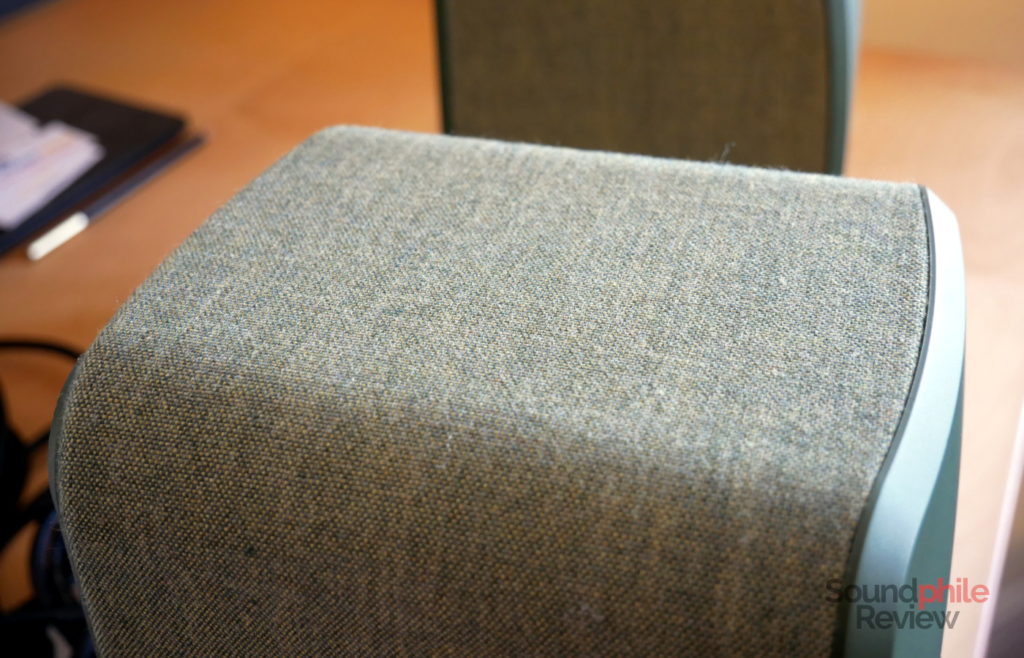
Build quality appears to be rather high, with no indications of any weaknesses. The plastic is solid and well-assembled, while the fabric adheres to the cabinet perfectly. I can’t find any faults in how the LSX are built.
The remote is probably the less successfully designed part of the system. Not because it is not effective or because it has few options, but because the buttons are just printed on and are flush with the rest of the body, so you need to look at it to use it. Functionally speaking it is not bad at all, as it has eight buttons which cover all the main functions: power, source, reduce volume, raise volume, mute, play/pause, previous track and next track. It’s also lightweight and with rounded shapes that make it easier to hold it.
Features & Specs
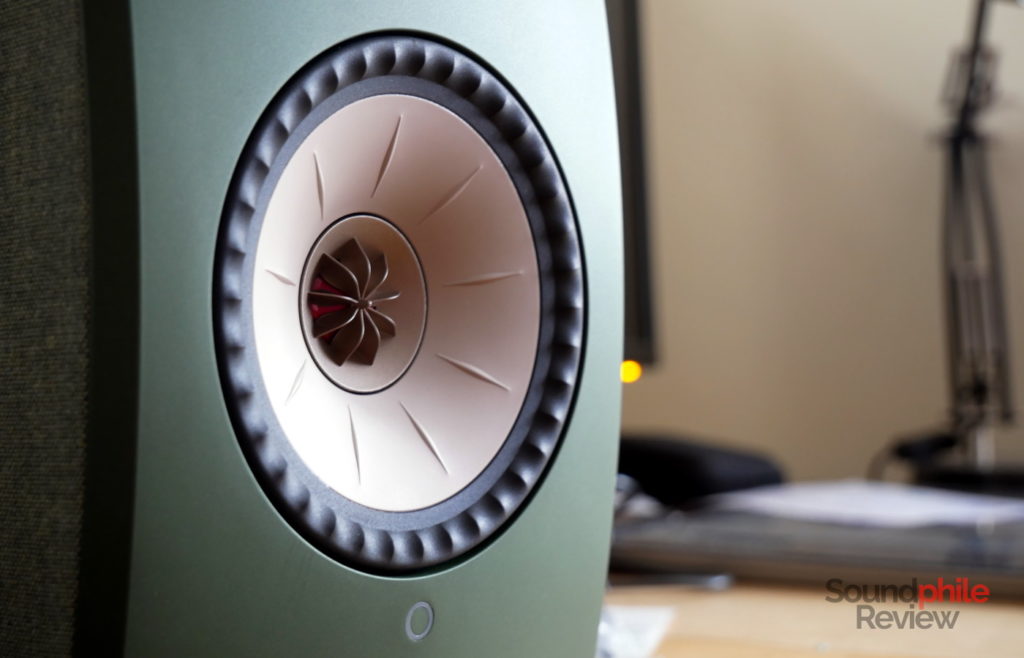
The KEF LSX can be connected either wirelessly or using a dedicated Ethernet cable. There are no major differences between the two modes, the only notable one being that wireless is limited to 48 kHz sampling rate. The Ethernet cable must connect the two speakers directly, so one cannot use a switch or router to connect them.
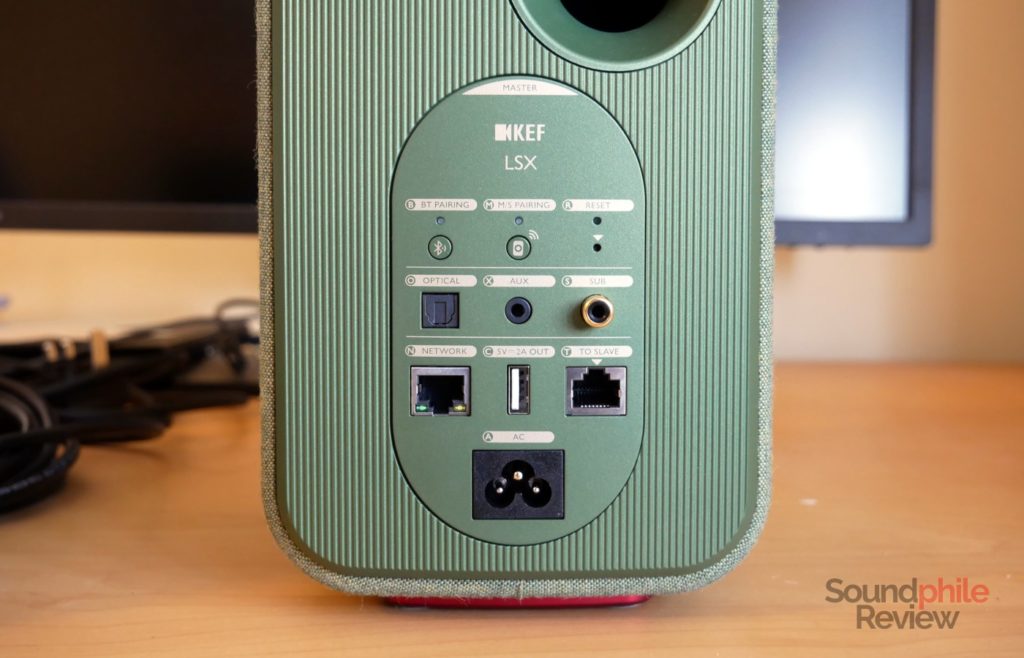
The connection with the source can happen in a variety of ways, including WiFi, Bluetooth, optical and analogue (3.5 mm). Bluetooth offers compatibility with the aptX codec, so one can listen to high-quality music even when using Bluetooth. WiFi, on the other hand, makes it possible to stream 24 bit / 192 kHz content with downsampling to 24 bit / 96 kHz (which is the maximum resolution allows by the wired mode).
The Bluetooth connection is reliable and stays solid even when moving the source device around the room; only when going in another room there are stuttering and stops. It’s an otherwise solid experience.
KEF LSX
|
| Frequency response | 54 – 26,000 Hz ±3 dB (depending on settings) |
| Power output | 70 W low frequencies, 30 W high frequencies |
| Maximum SPL | 102 dB |
| Connections | Bluetooth 4.2 (with aptX), aux in, Ethernet, optical, WiFi (2.4 GHz and 5 GHz), sub out |
| Driver type | KEF Uni-Q: dynamic driver with coaxial tweeter |
The 102 dB maximum output is not enough to tear down the walls of your house, but it’s more than enough to make you feel the music on a physical level. And that’s true even without pushing the speakers to their max volume. The 100 W total power available is used well.
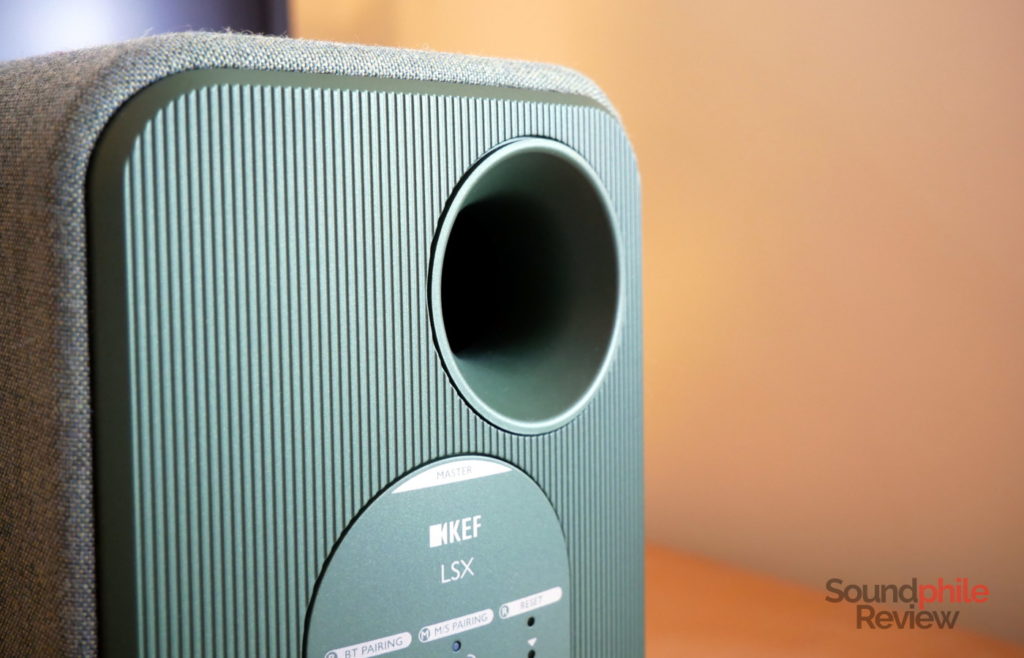
There’s an internal DSP managing the frequency response and it can be tuned to adjust to the specific setting of the room the speakers are placed in. It cuts off frequencies below ~55 Hz and then after 20,000 Hz, but it keeps everything else more-or-less linear (more on tuning below). What I love about this DSP control is that you can place your speaker where you need them and make them part of an existing room, instead of re-designing the room to accommodate the speakers. This allows for a much larger flexibility than any passive speaker with a traditional amplifier allows. While some purists may disregard this practice, it is actually the best one could hope for if you already have an existing house with its furniture and setting and you don’t have the possibility of readjusting it according to the acoustic needs of the speakers. In other words, the KEF LSX is much more spouse- (or partner-) friendly than traditional speakers. And let’s admit that: it is much better when one can just concentrate on the music instead of all the placement details, however pleasant and exciting the setup process of new speakers might be.
Software
Oddly enough, KEF decided to create not one, but two applications. They’re called KEF Connect and KEF Stream; the former is used to set up the speakers, while the latter is used (as the name suggests) to stream content to them. Having just one app would have been much better, but there are quick access shortcuts inside each app to get to the other, so this is not too much of an issue. I tested the Android version of the apps (it is also available for iOS).
The aforementioned DSP control is most probably the main reason why you would want to use the apps. There are many presets that allow one to adjust the tuning to the placement of the speakers and to the room they are in. One can set the distance from the wall behind, the distance from the edge of the desk or other furniture piece they are on, the distance from the walls to the sides, how cluttered the room is and so on. All these parameters shape the tuning of the speakers and allow one to get the best frequency response for the listening environment. The effect can be dramatic, especially with bass: in my case the default settings led to booming bass, whereas the new settings made it much cleaner and clearer. There is also a set of advanced settings that one can use to adjust bass and mids through “wall mode” and “desk mode”, treble trim, phase correction, bass extension, subwoofer crossover point, subwoofer gain and polarity. There’s enough for most people to fiddle with.
KEF confirmed to me that they don’t intend to introduce an equaliser in the settings, as they “have tried to avoid overcomplicating the user experience or providing features which can compromise the sound quality if not used correctly“. I can see the reasoning behind it and I agree, up to a certain point; the downside of this approach is that more “advanced” listeners won’t be able to tailor their listening experience to their tastes.
There are also settings related to the cable mode (whether to use it or not), the use of the status LED and an option to inverse channels so one can use the master speaker on the left (as opposite to the default right).
Sound
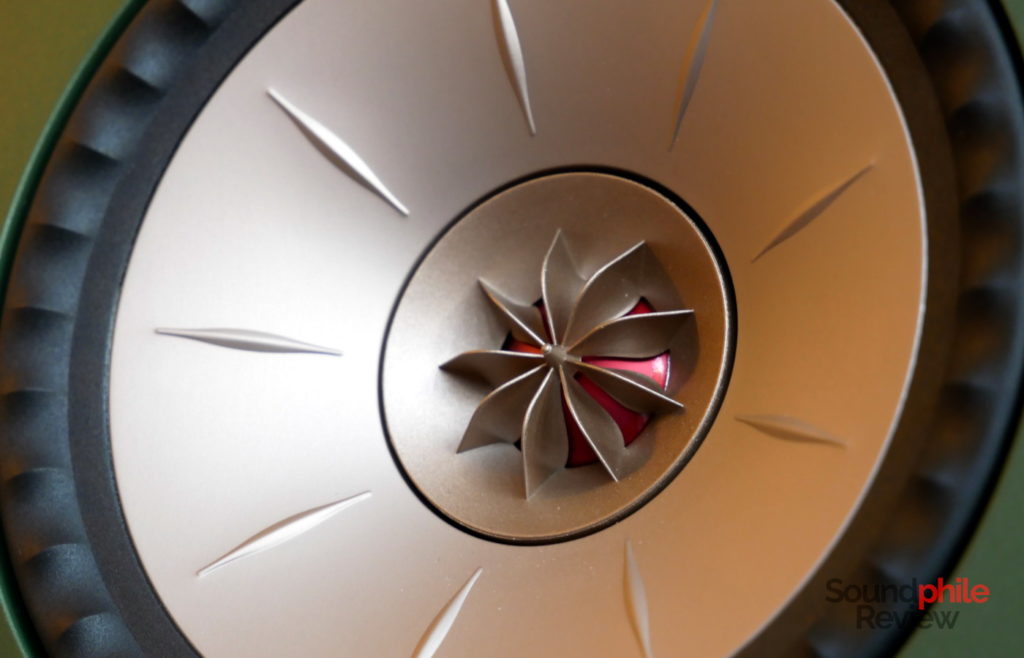
I tested the KEF LSX in various places and they don’t seem to be too influenced by the placement using the default configuration. While they are affected by it, they’re fairly flexible and placing them at ~30 cm from the wall behind them yielded good results, though I found they sounded best at ~50 cm from the wall. Unless one sets them up using the app (which one really should), they seem not to like being placed too near any surface behind them: even when setting them up, though, they’re not the best when used without free space around them, though placing them beside a TV or on a desk causes no significant issues as long as there is some space on the sides.
The LSX are indeed small, but they sound much, much bigger than their size would suggest. The soundstage is much larger than one would expects and expands beyond the speakers themselves. While you can actually hear the sound coming from the two speakers if you focus on it, it actually appears to be coming from further right and left of them. The scene is wide and imaging is superb, so that placement of instruments on the stage is accurate: each instrument has a place and there’s a place for each instrument. There’s also great depth: in La musica notturna delle strade di Madrid by Boccherini (included in the Master and Commander soundtrack) you can really hear the large space where the instruments play which extends not only in width, but in depth too.
Instruments are also separated from each other clearly enough, with relatively little mingling and mixing even in complex tracks. I wouldn’t describe the sound as entirely clean and clear, but the KEF LSX are still remarkably able to convey a large amount of details when faced with complex tracks with overlapping instruments. As a practical example we can take Bleak by Opeth, whose mix of various instruments is portrayed with remarkable ability as all instruments remain distinguishable despite the mix as a whole being really demanding (it’s still death metal, baby).
It’s also outstanding how the listening position matters relatively little: up to a bit more than 45° the sound is actually almost identical and the only thing that is messed up is imaging (obviously). The KEF LSX really fill up a room with sound, however large it is, and they allow one to experience high-quality sound from anywhere in that room.
The overall tuning is remarkably leaning towards neutrality, with just small deviations from it. This makes the KEF LSX remarkably apt at reproducing a wide variety of instruments and genres and is quite an exceptional result given how small the speakers are.
Bass is present – more than one would legitimately expect out of such small drivers, actually. While it does not extend too deep (it stops around 55 Hz), it reaches that depth with enough volume that those frequencies are clearly heard and felt. In fact, despite the small diameter of the driver, bass is unexpectedly physical. It’s not ground-shaking, as laws of physics still apply, but surely it packs a punch. It’s a bit more abundant than in an ideal neutral setting, as it has more presence in the mid-bass region (~150 Hz) that make the sound as a whole warmer. Not only is bass physical though, it is also remarkably fast and controlled; it is capable of delivering a lot of details, even minute ones, and portray different layers. In Foundations of Stone from the soundtrack for The Lord of the Rings: the Two Towers the bass drums are not only physical, but also really detailed to the point one can hear the leather of the drums bouncing, and the same applies to The Battle from the Master and Commander soundtrack. A different, but not less impressive sensation is given by listening to Wallace from the Blade Runner 2049 soundtrack, where the mix of the synthesisers and the ultra-low-tone voice mix to create an enveloping scene – you really feel sucked into the music (and it does shake the ground a bit).
While there is some emphasis on the mid-bass, midrange seems to be relatively unaffected by it as it appears neutral enough – possibly with a hint of warmth. Voices, both male and female, are portrayed equally well and there seems to be no bias towards any of the two. This lack of bias applies to the whole midrange, so all other instruments appear as they should: I am especially fond of the wind section of orchestras, as brasses such as trombones and horns are especially well rendered (but this impression of mine might be skewed by my preference towards their sound). There are lots of details in the midrange: let’s take Trains by Porcupine Tree, where the hands clapping are thoroughly detailed, or the flute in Concerning Hobbits from the soundtrack for The Lord of the Rings: the Fellowship of the Ring, or the strings in the aforementioned La musica notturna delle strade di Madrid. Mids, too, are more than decently physical and offer perceptible impacts coupled with good speed.
The treble area is no less good, though it is less linear than midrange. There are in fact a few dips going on, which are however not too noticeable. The extension is quite good and reaches the topmost audible area without issues (as far as my ears can tell). The small tweeters are able to portray a whole lot of details and especially micro-details: the cymbals in Max Trabucco’s Rosa dei Venti are especially remarkable in how detailed they are. The lack of especially noticeable peaks or dips also make cymbals, hi-hats and all other high-pitched instruments clearly present in the mix without being neither piercing nor, on the other hand, distant. Instead, they lend air and effectively counterbalance the bass.
There’s not much limit to what the KEF LSX can do in terms of genres they are able to reproduce competently. Whether you want to listen to classical music or to death metal, they should serve you just fine.
Final Thoughts
Given their small size, the KEF LSX are a bit of a miracle. They are a pleasure to listen to not only thanks to their tuning, but especially because of their technical ability. The width of the stage is impressive for speakers this small, and the imaging is sensational. I don’t know if KEF designed the LSX to be the one and only system in a house, but they surely can fill this role (save for the most demanding audiophiles, but that ça va sans dire). I’m honestly impressed with how far active speakers this size have gone.
The availability of a variety of connections makes them even more versatile. They are a full system that requires virtually nothing else to work, save for a smartphone or tablet to control them. That’s the kind of innovation I like to see: technology should help declutter our spaces, instead of filling them with more and more stuff. For how much I love my tube amplifiers, the sheer convenience of a small box that sounds wonderfully is much more attractive to my sub-30-years-old eyes.

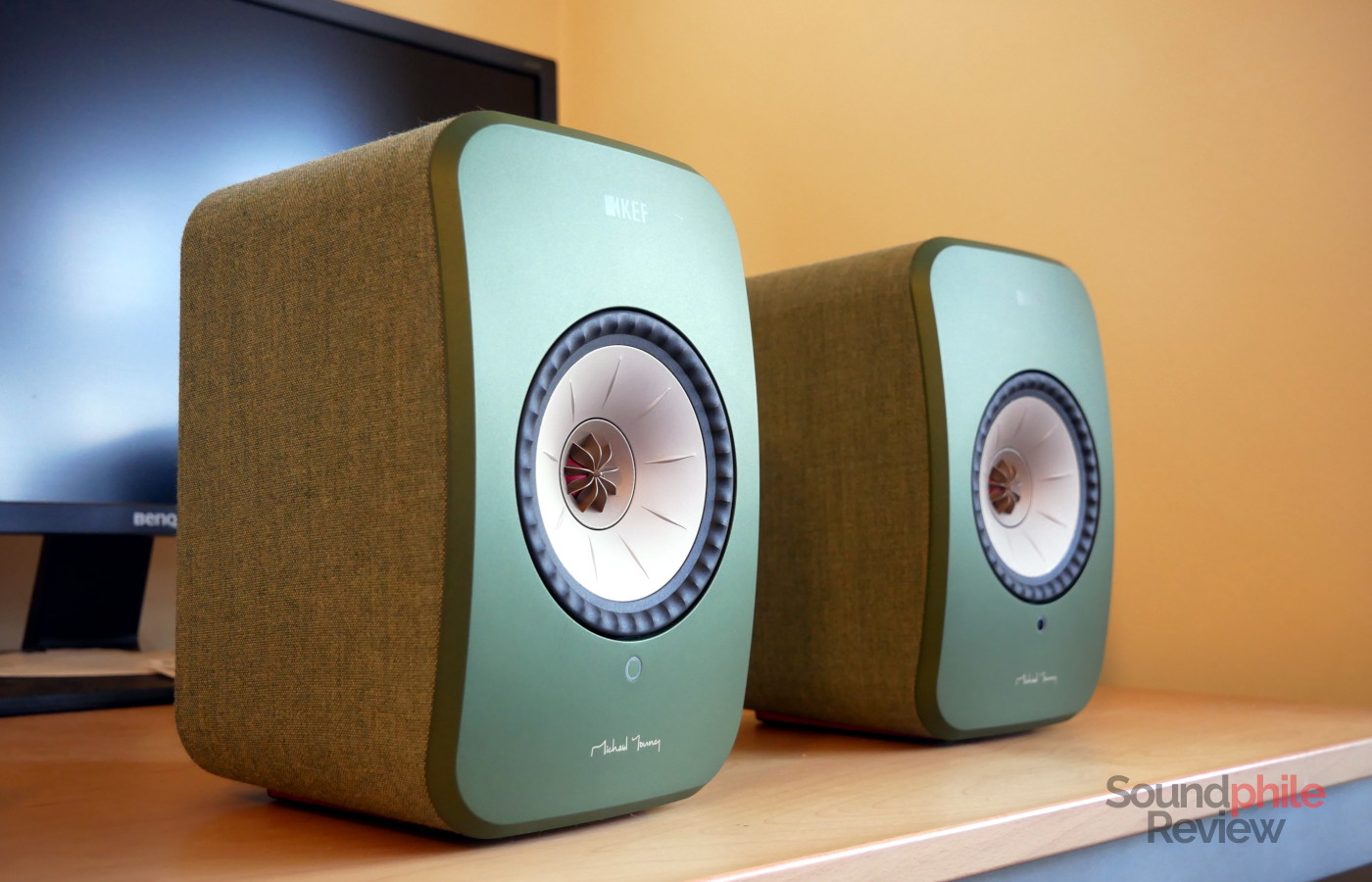






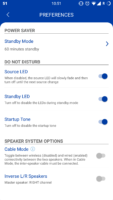




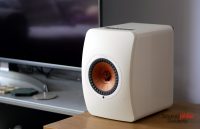
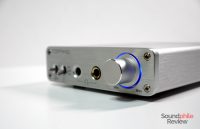



Please please please do a review of the xduoo x20??????
Hi Mark,
As this blog generates zero revenue for me, I can’t afford to buy equipment if I don’t strictly need it and this is especially true if it’s expensive (the xDuoo X20 is ~$250!). I asked all my partners if they could send me a unit, but none of them had one available. If you want to see a review of the X20 on Soundphile Review, please pressure the retailers you know asking if they could send me a unit as you like my work. That’s the only way I can see this happening. Thank you for your support!
An excellent review. Thank you. Do you know if these speakers are Room Ready?
Thank you! Unless things changed recently, no, they are not Roon Ready, even though they do work with Roon.
Hello! Thank you for your fantastic review. Where are these speakers made?
Hello! Unfortunately I don’t know, I don’t have them any more and I can’t check on the box. They could be made in England, by what I’ve found online, but I’m not quite sure. I’m sorry I can’t really help with this!
Hello Riccardo,
on the base plate it says „Made in China“. I wouldn‘t refrain from trying them because of that. They are excellent speakers indeed.
Best regards
Thanks Markus! I do agree with you, these are fantastic speakers, independently of where they were manufactured.